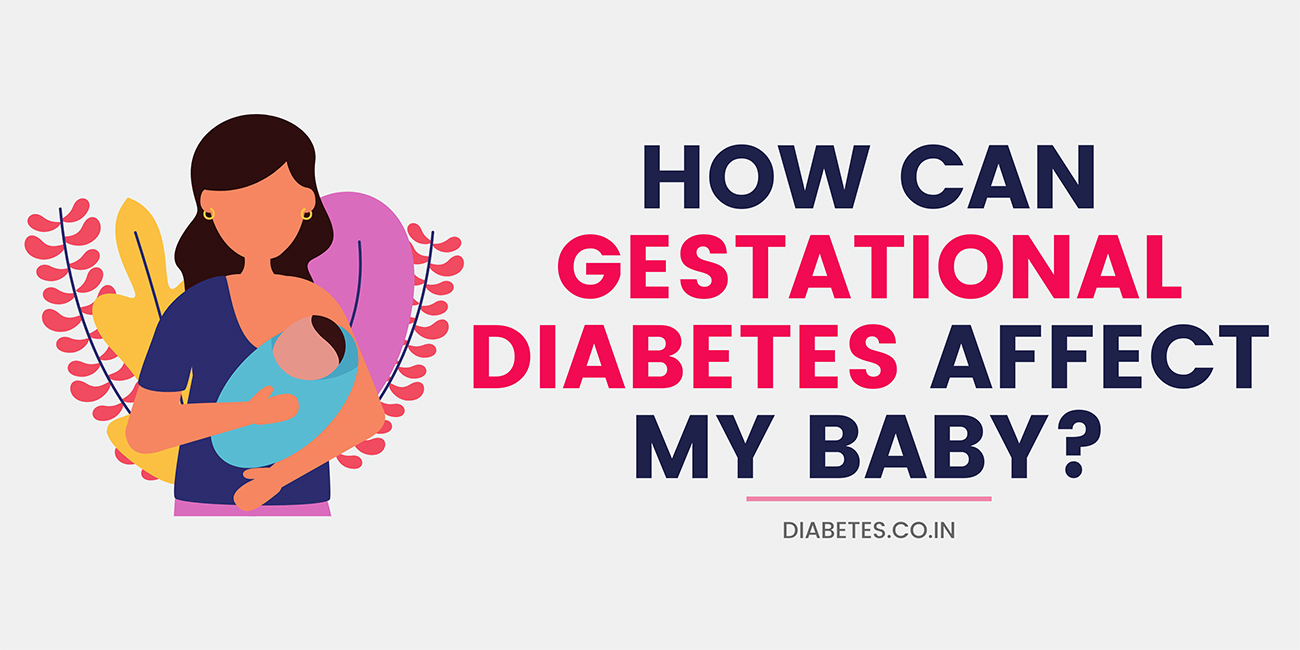After the first three months of pregnancy, diabetes diagnosed in a pregnant lady is called Gestational Diabetes Mellitus (GDM). It is a common disorder seen, nowadays, in pregnant women. If a lady has diabetes before the pregnancy or if the glucose levels are too high, even though her diabetes is diagnosed in pregnancy, it is called Pregestational Diabetes(1).
- Pregnancy increases the risk of diabetes in a woman because of an increase in various hormones (GH, HPL, Progesterone, etc.) released from the placenta.
- These hormones decrease the efficacy of Insulin and thereby increase the risk of high blood sugars in pregnancy.
- In some women, this effect is compensated by an increase in the production of Insulin.
- Those who fail to produce adequate Insulin will develop Gestational Diabetes.

All pregnant women, especially those with risk factors like:
- Overweight/obese
- Family history of diabetes
- PCOS (Polycystic ovary syndrome)
- History of GDM in a previous pregnancy, etc.,are screened for diabetes in their first visit to the obstetrician.
If the sugars are normal, a test called OGTT is done between 24-28 weeks of pregnancy, wherein the pregnant lady is made to drink a certain amount of glucose water in the fasting state.
Three blood samples are drawn:
- Fasting blood sample
- Post 1hour sample (1 hour after drinking glucose water)
- Post-2-hour sample (2 hours after drinking glucose water)
If the glucose levels are above the normal value for pregnancy, even in one sample, the woman is diagnosed as GDM. GDM is to be treated properly because it can cause complications in both the mother and her baby. The pregnant mother can develop :
- Hypertension (Preeclampsia)
- Excess liquor (Polyhydramnios)
- Increased tendency to cesarean section
- Risk of developing diabetes in future pregnancies
- Type2 Diabetes in her lifetime
The baby is at risk of :
- Being born as a big baby (Macrosomia)
- Birth injuries
- Low blood sugar (Hypoglycemia)
- Respiratory problems
- Jaundice, etc. after birth
- Also, the baby carries a risk of developing diabetes over its lifetime
GDM mothers are advised to take Diabetic Diet and Insulin injections if required. There are very few tablets that can be prescribed for diabetes in pregnancy.
By following the advice of Endocrinologists and Obstetricians, most of the pregnant women with GDM can have safe pregnancies and healthy babies if their blood sugar levels are maintained in the normal range.